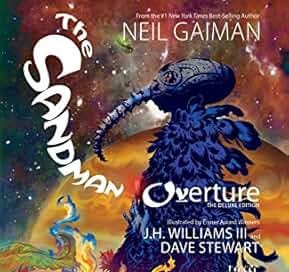I distinctly remember the first time I read Neil Gaiman’s famous comic series. I was about 19 years old, at uni, and my best friend passed me some hardback volumes of a comic that a friend of his had lent him. From the first pages, I was flabbergasted: at the time I was even more pedantic and text-centered than I am now, and had for long cultivated I disdain towards comics as a childish entertainment populated by superheroes in funny costumes or by robots that transformed into things. The Sandman was an eye-opener: here was narrative art at the top of its game, with very little of the silliness and a lot of intellectual and conceptual depth and character development. Gaiman influenced my own, budding literary attempts, and it opened my mind towards reading other ‘graphic novel’ authors like Alan Moore, Guy Delisle or Art Spiegelman.
The book I read in the last two days is the prequel to the whole Sandman series, telling the story of how lord Morpheus got so weakened as to be captured by an Aleister Crowley-like cultish group and setting the gears in motion for the saga. And it was every bit as good as the work I remember reading in my early twenties. I am still mostly a wordcel, which means I find it challenging to appreciate artforms that are non purely textual as well as they deserve. Here I tried to stop and appreciate the coloring, the compositions, the drawing, the lettering. All is of superb quality and craftsmanship. All of it displays wild originality (it is sometimes a non-trivial matter to follow the proper order of the vignettes) and a stunning effect.
If you haven’t read the Sandman series, I would definitely recommend you to do so. It is, for me, the canonical pinnacle of comic art. As for this book, it is its befitting conclusion (or beginning?).




